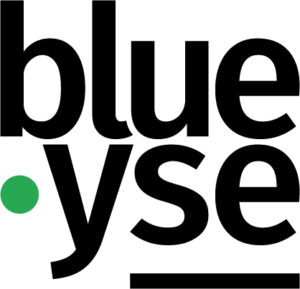
Starting in the ‘90’s, gifs were mostly used on websites. The internet was filled with blogs and websites with these silent moving images. In time people started to get annoyed by these. They preferred to have a website without distractions. The alternatives became nicer and so the gif disappeared. That changed in 2017, when gifs became usable in WhatsApp. This revived the usage of gifs, and they’ve been on the rise since.
What are gifs
The American software developer Steve Wilhite developed the gif in 1987. They are short clips of moving visuals that can consist of 256 colours which can be endlessly looped. The significant difference with video files is that the file size of a gif is much smaller. Also, gifs work in all major browsers. Moreover, they play automatically when the page loads.
The power of repetition
So why is it that gifs are back from the worldwide wasteland? It’s mainly in the power of repetition. Repetition makes you remember information longer. In fact, people tend to develop a preference for people or things that are recognizable to them. A repetition of a message creates recognition that makes people feel more positive about it.
Repeated messages are usually believed faster. We humans prefer convenience. Therefore, it is also much easier to regard a message as true than false, the so-called truth effect. This means that people tend to regard a message as the truth when it has been repeated several times, regardless of whether the message is true or false.
Why do businesses choose gifs?
There are numerous statistics that prove the value of using gifs for businesses. One study found that articles with an image every 75-100 words were twice as likely to be shared on social media as articles with few images. Another Dell study found that an email campaign that relied heavily on gifs resulted in a 103% increase in conversion rates.
Gifs:
Do more than standard images – Gifs add movement and energy to the content they accompany, making it easier to stand out among competitors in social feeds, emails, ads and more.
Ensure positive brand correlation – Adds fun to customer interactions and creates a positive brand correlation.
Improves learning – Stress the importance of visual learning. Science says the brain can process images 60,000 times faster than words. That means gifs inform better than longreads or instructions.
Are mobile-friendly – Videos on a website can lead to slow load times and an unfavourable user experience. Gifs solve that problem: Their file sizes are notably smaller than videos – and sometimes even smaller than images – making the mobile viewing experience much more accessible to those with bandwidth issues.
Helping to connect on an emotional level – A while ago, a longread about dangerous migrant routes appeared on cnn.com. This article contains many gifs where you see migrants, including children, stumbling forward on impassable terrain. As a result, the reader sees and feels the desperation. As more and more news is read on a screen, journalists increasingly abandon the traditional picture/talk format.
Social media and the rest
Social media is the ultimate channel for gifs. These fun, quick bits of content are exactly what social media was created for. So, it makes sense that brands around the world and in almost every industry are using gifs on social platforms. For example, Coca-Cola has created several gifs to highlight the freshness of its drink. In the Netherlands, KLM is a good example. People going on vacation often let people know this through their social media and use gifs from KLM in their posts. Think, for instance, of a flight attendant welcoming people to the plane. Coolblue and Albert Heijn also use gifs a lot.
Of course, gifs also have many features that make them great for emails, blog posts, websites and product pages.
Sources
Een gifje wat is dat? https://www.woonz.nl/informatie-inspiratie/actueel-cat/gifje-op-whatsapp/
On one of the world’s most dangerous migrant routes, a cartel makes millions off the American dream: https://edition.cnn.com/2023/04/15/americas/darien-gap-migrants-colombia-panama-whole-story-cmd-intl/index.html
Waarom iedereen van gifjes houdt: https://www.vpro.nl/lees/artikelen/2016/gifjes.html
Gifs: een belangrijke hefboom op sociale netwerken: https://filtermaker.fr/nl/nieuws/de-kracht-van-gifjes/
De kracht van de gif: waarom gifjes hét middel zijn voor meer betrokkenheid: https://contentbureau.eu/blog/de-kracht-van-de-gif-waarom-gifjes-het-middel-zijn-voor-meer-betrokkenheid/
Dit komt mij bekend voor – de kracht van herhaling: https://prosumediaproducties.nl/algemeen/dit-komt-mij-bekend-voor-de-kracht-van-herhaling/#:~:text=Herhaling%20zorgt%20ervoor%20dat%20je,een%20positiever%20gevoel%20bij%20krijgen.
GIF Marketing: How to Create and Use GIFs for Business: https://www.wyzowl.com/gif-marketing/
